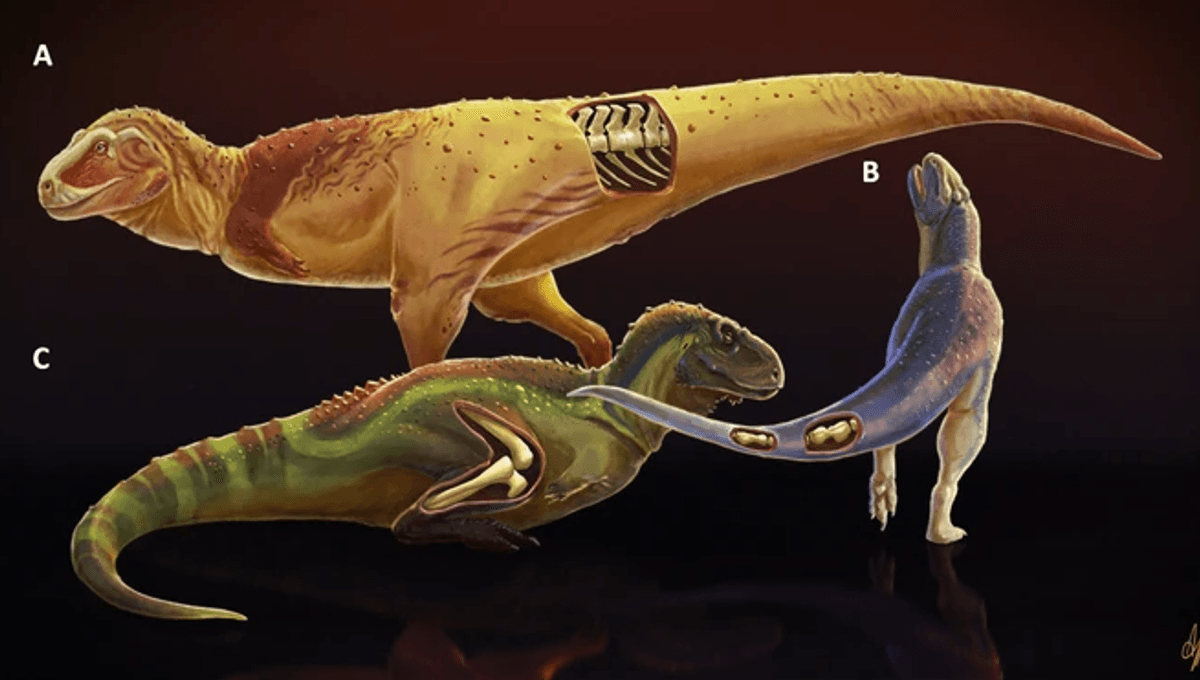
Fossils can tell us a lot about dinosaurs, and sometimes, it can be pretty surprising. That’s certainly the case for a new study that analyzed the bones of everyone’s favorite bipedal predators, the theropods. The research revealed that this group of dinosaurs may have been affected by bone diseases, and that particular types of theropods could be associated with specific patterns of disease and injury.
To reach this conclusion, the research team used a combination of CT scans and microscopic analysis (also known as histology) to examine the bones of three theropod species: Aucasaurus garridoi, Elemgasem nubilus, and Quilmesaurus curriei. All three were predatory dinosaurs with short arms and hefty skulls (like their fellow famous theropod, T. rex) that lived in South America around 90 to 70 million years ago, during the Late Cretaceous.
The scans uncovered evidence of bone disease in all three dinosaurs. In the base of A. garridoi’s tail, the researchers found two vertebrae fused together, which they put down to a congenital disorder – it came out of the egg with it. E. nubilus also had evidence of bone fusing, as well as overgrowth; in this case, the researchers suggested that this could be the result of inflammatory arthritis.
The analysis also highlighted irregular bone formation in one of Q. curriei’s legs. This was a particularly rare find, as paleontologists haven’t found much evidence of disease in weight-bearing bones in theropods. Some mysteries remain, however, as the team couldn’t say for sure what the cause of the irregularity was. Regardless, it may well have given this dinosaur problems getting about.
In search of any patterns to which diseases affected theropods, the researchers then took to reviewing the existing literature on both bone disease and injury in this group. The three species analyzed in the current study all belong to the wider family Abelisauridae; the literature revealed that species in this family could be positively associated with bone inflammation, suggesting that they were probably fairly infection-prone.
The literature review also made some interesting findings when it came to bone injuries in theropods. We might expect a lot of broken bones, but it turns out that’s not the case for the family Tyrannosauridae. Instead, species in this group are more likely to be associated with bite marks on the skull (ouch), indicating that they got aggressive pretty often. The opposite was found for Allosauridae – that suggests they were active predators, so whilst they weren’t fighters, they weren’t exactly lovers either.
The study provides an example of just how much we can find out about dinosaurs and their lifestyles from bones alone. But if you think the presence of bone disease in therapods might have rendered them completely safe, remember – they still had pretty big jaws. Something to keep in mind, de-extinction enthusiasts.
The study is published in the journal BMC Ecology and Evolution.
Source Link: Some Dinosaurs May Have Had Arthritis 90 Million Years Ago